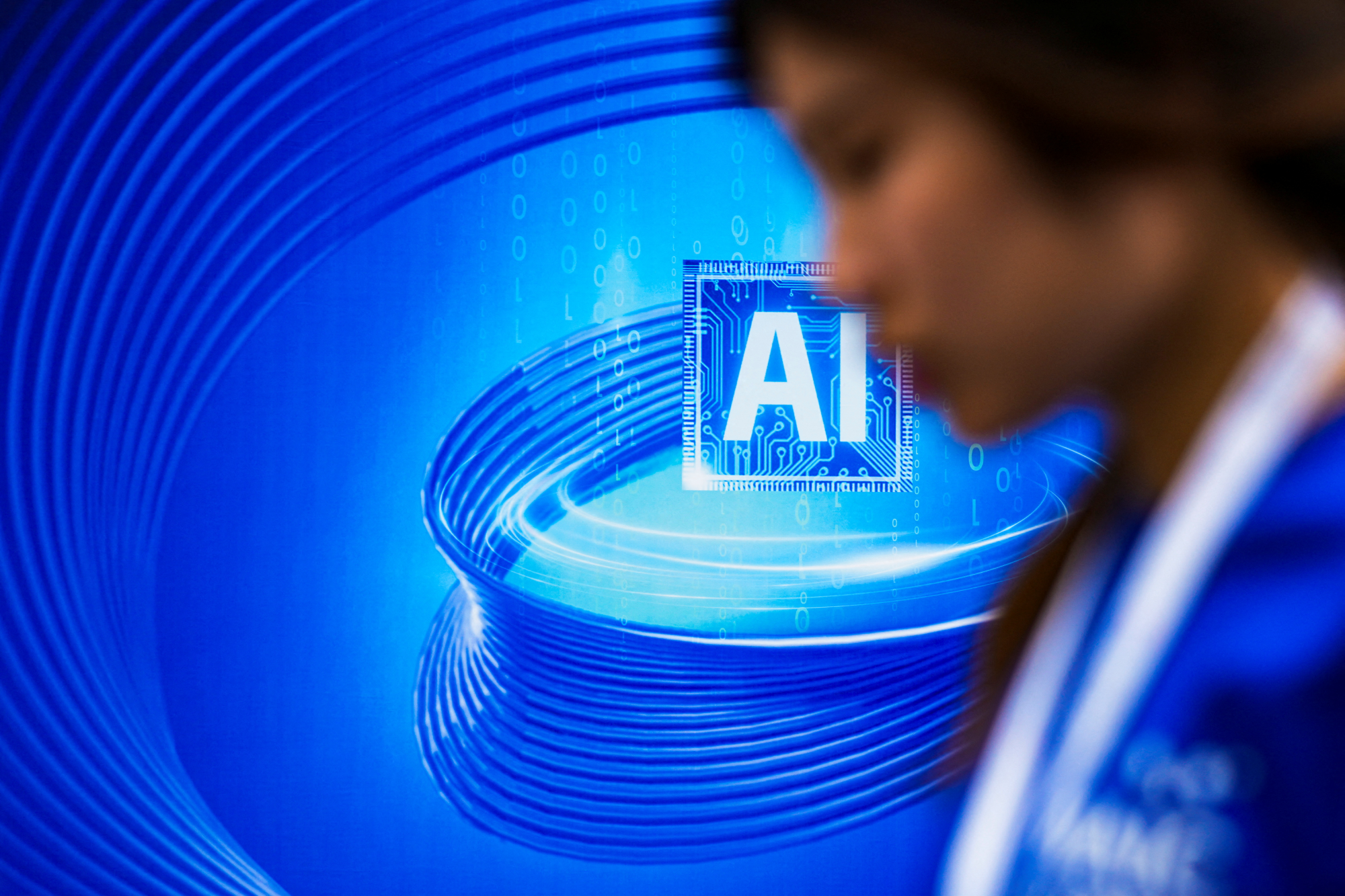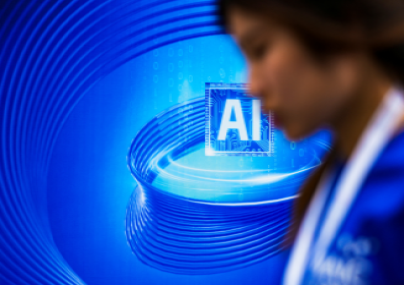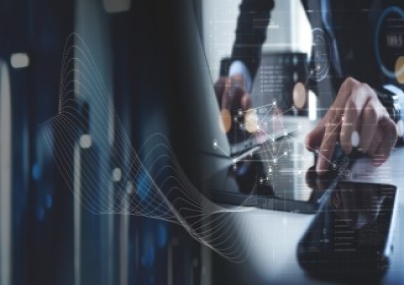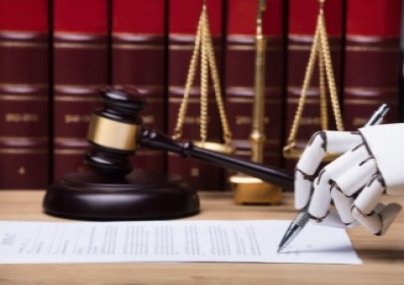
When it comes to generative artificial intelligence (Gen AI), China is leading the world in both regulation formulation and judicial practice. In response to the many Gen AI-related intellectual property issues that are being hotly debated around the world, experts share with ALB the latest moves by Chinese regulators and courts.
Since the introduction of Gen AI tools like ChatGPT in late 2022, the way humans interact with the new technology has progressed from simple questions and answers to using these tools for formal writing, creating images, and even generating videos. The commercial potential of Gen AI is also becoming increasingly evident.
As people marvel at the capabilities of Gen AI, they are also starting to ask more questions about these intelligent tools. In 2023, dubbed the "First Year of Gen AI," many have begun scrutinising it from an intellectual property perspective.
Regarding why the "attack" on Gen AI initially focused on intellectual property, He Wei, a partner at Wanhuida Intellectual Property, explains that it's largely due to the technical characteristics of the large language model (LLM) that underpins it. "An LLM undergoes two stages: pre-training and application. During pre-training, the LLM processes a vast array of text, graphic, and video materials, which are typically subject to copyright control."
"At the application stage, Gen AI has demonstrated epoch-making capabilities of generation. Whether text, image or video, any content output has author-like attributes and is therefore naturally linked to copyright."
Therefore, based on his observations, the current global debate on Gen AI-related IP issues mainly focuses on the rights involved in the materials used in training end and the copyright ownership of the works generated by Gen AI.
RAPID RESPONSE
Problems attract regulations. In the past few years, China has shown global leadership in formulating regulations for new technologies. There is no exception when it comes to Gen AI.
According to He Wei, the Administrative Provisions on Algorithmic Recommendation in Internet Information Services and the Administrative Provisions on Deep Synthesis of Internet Information Services issued in 2022 are both administrative-level regulations imposed on the technology applied by AI.
Then, after the emergence of ChatGPT, "China also actively followed up with rulemaking. For example, last July, the Ministry of Science and Technology announced the inclusion of the drafting of an artificial intelligence act in the national legislative work plan. On July 10, the Interim Administrative Measures for Generative Artificial Intelligence Services, also known as Interim Measures, were officially promulgated at what can be described as 'lightning speed.'"
Long Chuanhong, president of CCPIT Patent & Trademark Law Office, explains how the recent rules address IP issues. Specifically, Articles 4 and 7 of the Interim Measures state that "the provision and use of Gen AI services should respect intellectual property" and that "Gen AI service providers must conduct pre-training, fine-tuning, and other data processing activities legally. If IP is involved, they must not infringe on the legal IP rights of others."
"These provisions have provided legal bases for regulating IP protection of Gen AI services. However, the Interim Measures only offer general principles without providing explicit clarifications for issues such as what specific operations in Gen AI services will cause IP infringement and whether there are fair use exceptions. Further legislation and practical development are needed."
In terms of patents, Long notes the importance of the updated Detailed Rules of Implementation of the Patent Law and the Patent Examination Guidelines that took effect earlier this year. "These regulations address two critical questions: whether AI itself can be recognised as an inventor or patent holder, and whether an AI application or algorithm qualifies for a patent, including how to refine the examination rules."
Long further explains that regarding the legal eligibility of AI, the Patent Examination Guidelines stipulate that "the inventor shall be an individual, and that the name of an entity or collective and the name of AI shall not be filled out in the application. For example, the applicant's name cannot be 'XX research team' or 'xx AI'. This seems to have excluded the possibility of AI being applicant."
On the patentability of AI applications or algorithms, "the Patent Examination Guidelines have specifically stipulated the examination rules for invention patent applications involving AI in the 2019 revision. The revisions this time have added circumstances where AI-related inventions are patentable and provided corresponding illustrations," says Long.
JUDICIAL PRACTICE
Beyond rulemaking, Chinese courts have recently issued decisions in several groundbreaking Gen AI-related IP cases, offering judicial insights into pressing issues.
Long points out that as early as 2019, the Beijing Internet Court and the Shenzhen Nanshan District People's Court had already issued judgments regarding copyright for AI-generated content. "However, these two decisions differed in their reasoning and conclusions about whether AI-generated content qualifies as work protected by copyright, sparking widespread debate."
In the past few months, two new judgments have once again attracted attention.
The Beijing Internet Court issued a landmark judgment in November 2023 concerning "images generated by AI text," addressing the copyright issue of works produced by Gen AI. The case was initiated by the plaintiff, Li, who used AI to create images and shared them on the social media platform Xiaohongshu. Subsequently, the defendant, a blogger on Baijiahao, used these images in their articles without Li's permission, leading to the lawsuit. The court determined that the AI-generated images possessed the "originality" required for copyright protection, highlighting the human intellectual effort involved in their creation. It emphasised that using AI models to generate images is essentially utilising tools in the creative process, with the intellectual contribution coming from humans, not the AI, thus warranting copyright protection.
It is worth noting that "the thinking of this judgment is significantly different from the views of the U.S. Copyright Office and the U.S. courts," says Long.
The second is the "Ultraman" case, ruled by the Guangzhou Internet Court in February 2024, tackled the use of Gen AI for training materials. The defendant, an AI company, runs the Tab website offering AI-generated painting services. The plaintiff, holding the exclusive copyright license for the Ultraman series images, noticed that the Tab website could produce images featuring Ultraman. The court determined that Gen AI service providers are expected to demonstrate reasonable care in their offerings. In this situation, the defendant did not establish a complaint mechanism, failed to caution users against copyright infringement through service agreements or other methods, and did not adequately label the images generated. Consequently, the defendant did not meet its duty of care and was found to be at fault. "This verdict has sparked another wave of intense debate on copyright concerns within the AI sector," notes Long.
He Wei has also noticed these two cases. He points out that given that Gen AI-related legislation still takes time, "in the short term, we may see courts in various regions make breakthroughs by issuing precedent-setting judgments, and there will be situations where different courts come to 'conflicting conclusions'."
According to He, the advantage of using judgments to respond to cutting-edge Gen AI issues is that "an individual case can be judged based solely on the circumstances of that case without having to carry too much 'baggage'. Thus, there is greater flexibility. Since China is not a common law country, different courts can discuss relative issues in the form of judgments, and these different opinions can then be escalated into judicial interpretations, administrative regulations and even laws. This is the appropriate approach to transit from judicial response to legislation when dealing with emerging IP issues."
OVERSEAS EXPERIENCE
In the field of Gen AI, since all jurisdictions are on the same starting line at the legislative and judicial levels, lawyers point out that close attention should be paid to relevant developments in other jurisdictions to draw valuable regulatory ideas.
He Wei shares relevant progress in the United States. "On August 30 last year, the U.S. Copyright Office began public consultation on a series of issues in the intersection of copyright law and AI, including core issues such as the copyrights of AI model training materials, the degree of transparency and disclosure of the use of copyright works, and the copyrightability of Gen AI output content."
Meanwhile, Long has noted the Executive Order on the Safe, Secure, and Trustworthy Development and Use of Artificial Intelligence issued by the U.S. last October, "which mainly requires different government agencies to formulate more concrete plans for the use of AI within their respective authority. This Executive Order emphasises innovation and competition, aims to promote the development of the AI industry, and advocates relatively prudent and loose AI regulation".
"It can be seen that the EU has adopted a risk-based AI governance framework and tiered regulatory approach, while the U.S. has opted for soft regulation and governance-driven development. This is worthy of reference for China's AI regulation with the goal of ultimately achieving the balance between development and security."
- Long Chuanhong, CCPIT Patent & Trademark Law Office
In the European Union, Long says that the Artificial Intelligence Act was passed in 2023, "which aims to introduce a common regulatory and legal framework for AI. According to the risk of harm that AI applications may cause, the AI Act classifies AI applications into three main categories for regulation: prohibited conduct, high-risk systems and other AI systems. Certain specific AI practices that threaten people's safety, livelihoods and rights are deemed to have unacceptable levels of risk and are prohibited; for high-risk AI, the AI Act imposes registration, risk assessment, human supervision and other obligations; for limited-risk AI, relevant players must fulfil certain transparency obligations."
"It can be seen that the EU has adopted a risk-based AI governance framework and tiered regulatory approach, while the U.S. has opted for soft regulation and governance-driven development. This is worthy of reference for China's AI regulation with the goal of ultimately achieving the balance between development and security," says Long.
He Wei also highlights the divergent approaches to Gen AI regulation between the EU and the U.S., noting, "The EU prioritises risk prevention for the public good, whereas the U.S. emphasises delineating and safeguarding private rights. This reflects the state of AI development in each region. In the U.S., where AI is advancing rapidly, overly stringent regulations could hinder industry growth. Conversely, the EU, lacking dominant AI firms, can afford a more robust regulatory stance."
Based on this, He predicts that since China hopes to encourage the development of the AI industry, future regulation "may adopt a relatively relaxed approach."
David Liu, partner of Chang Tsi & Partners, shares regulatory developments in the United Kingdom and Singapore and the experience that China can draw from. "The UK government is exploring appropriate forms of AI regulation, including the establishment of an AI Council to formulate a national AI strategy. The UK approach may inspire China as to how to coordinate and promote the development and regulation of AI at the national level."
At the same time, "Singapore has launched an AI governance framework that provides guiding principles and practices on the responsible use of AI. This framework emphasises data protection, transparency and explainability of AI. China may refer to Singapore's experience to develop AI governance principles applicable to different industries."
Yu Yuwu, senior partner of Wang Jing & GH Law Firm, emphasises that in judicial practice, countries are also paying more attention to the handling of AI cases, which is worth following. "For example, on December 20, 2023, the UK Supreme Court ruled in Thaler v Comptroller-General of Patents, Designs and Trade Marks [2023 UKSC 49] that AI cannot be recognised as the inventor in a patent application; recently, OpenAI and Microsoft have been sued by the New York Times and well-known writers such as Nicholas A. Basbanes for infringing upon their IP by using their copyrighted works to train AI models without authorisation. China should pay attention to and learn from these developments."
CLIENT INQUIRIES
Against this backdrop, lawyers are already seeing incoming client inquiries about IP issues related to Gen AI.
Yu notes that while no specific cases have yet arisen, "there have been client consultations and discussions on issues such as whether AI-generated content qualifies as a protectable work, the patentability of AI technological inventions, and the copyright ownership of AI-generated products. The primary concerns of clients revolve around the ownership and protection strategies for AI-generated products, the foundation of rights associated with AI performances, how to safeguard these rights, and the risks of infringing on others' AI-generated works."
Liu, using Chang Tsi & Partners as a reference, offers a unique insight, stating, "There has been a significant rise in AI-related patent applications in recent years. Between 2020 and 2023, the annual growth rate of AI field patent applications we've handled has averaged over 12 percent."
"Given the swift evolution of AI technology, tech companies have stringent criteria or elevated expectations regarding the patent application and commercialisation timelines in the AI domain. Thus, the urgency of patent-related activities in AI technology is a crucial concern for tech firms."
= David Liu, Chang Tsi & Partners
Drawing from past experience, Liu notes, "Technology companies in China, the U.S., and Japan place a high priority on patent protection and application within the AI sector. For instance, Internet giants like Alibaba Group, Baidu, ByteDance, Apple, Google, and Microsoft register a substantial number of AI patents annually. Additionally, China's emerging tech companies, particularly startups such as Canaan, Human Horizons, and Shanghai Quicktron, show a keen interest in AI. Some of these tech startups even regard AI technology as their core technological asset."
Liu highlights that client inquiries in the realm of AI patent development and application primarily revolve around exploring AI patent technology, its innovative aspects, the market application prospects of AI patents, infringement risks associated with AI technology, and the patentability of AI advancements. "Given the swift evolution of AI technology, tech companies have stringent criteria or elevated expectations regarding the patent application and commercialisation timelines in the AI domain. Thus, the urgency of patent-related activities in AI technology is a crucial concern for tech firms," Liu remarks.
He Wei has noticed a similar demand and points out that trademark protection for LLMs is becoming a prominent issue, often entangled with challenges like unclear categorisations and multiple cross-category similarities. "Especially in China, cross-category protection is currently only feasible through well-known trademarks. However, some LLMs, being relatively new at just around a year and a half old, do not meet the well-known trademark criteria of being registered for three years or used for five, posing a significant challenge."
Looking ahead, He anticipates that Gen AI might introduce fundamental challenges to the entire IP protection framework, particularly in the areas of design and utility models. The widespread adoption of Gen AI in industrial design could necessitate a redefinition of "novelty" in patent applications.
Moreover, "the recent introduction of Sora has sparked discussions among video producers about the potential for easy plagiarism of creativity if videos can be generated from simple prompts. Currently, the core principle of copyright protection is that it 'does not protect ideas, only their expression'. Moving forward, if 'creativity becomes king', this tenet could be upended, potentially requiring the development of novel protection strategies, like establishing an exclusive period for creative ideas to attract online traffic," He suggests.


